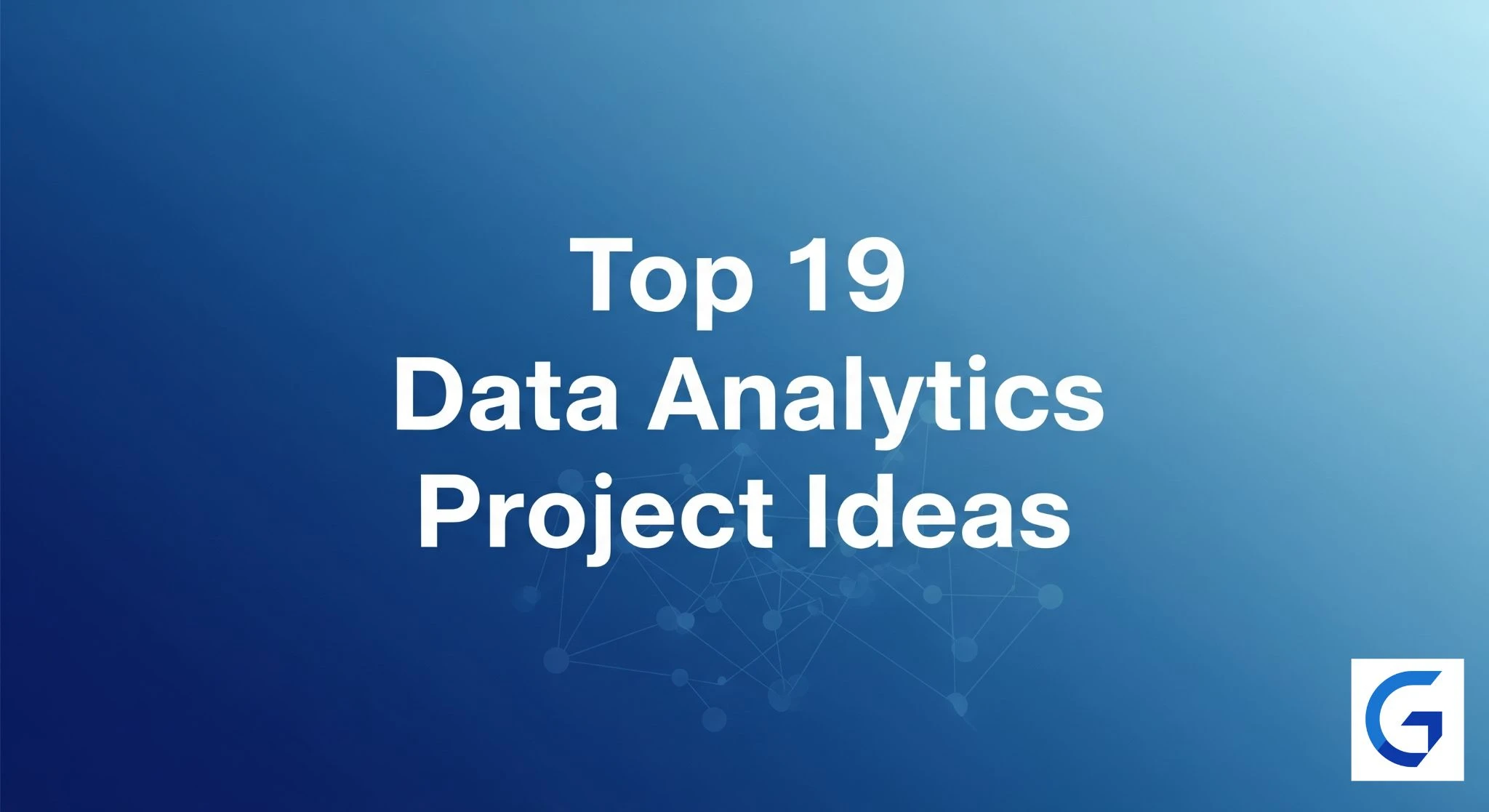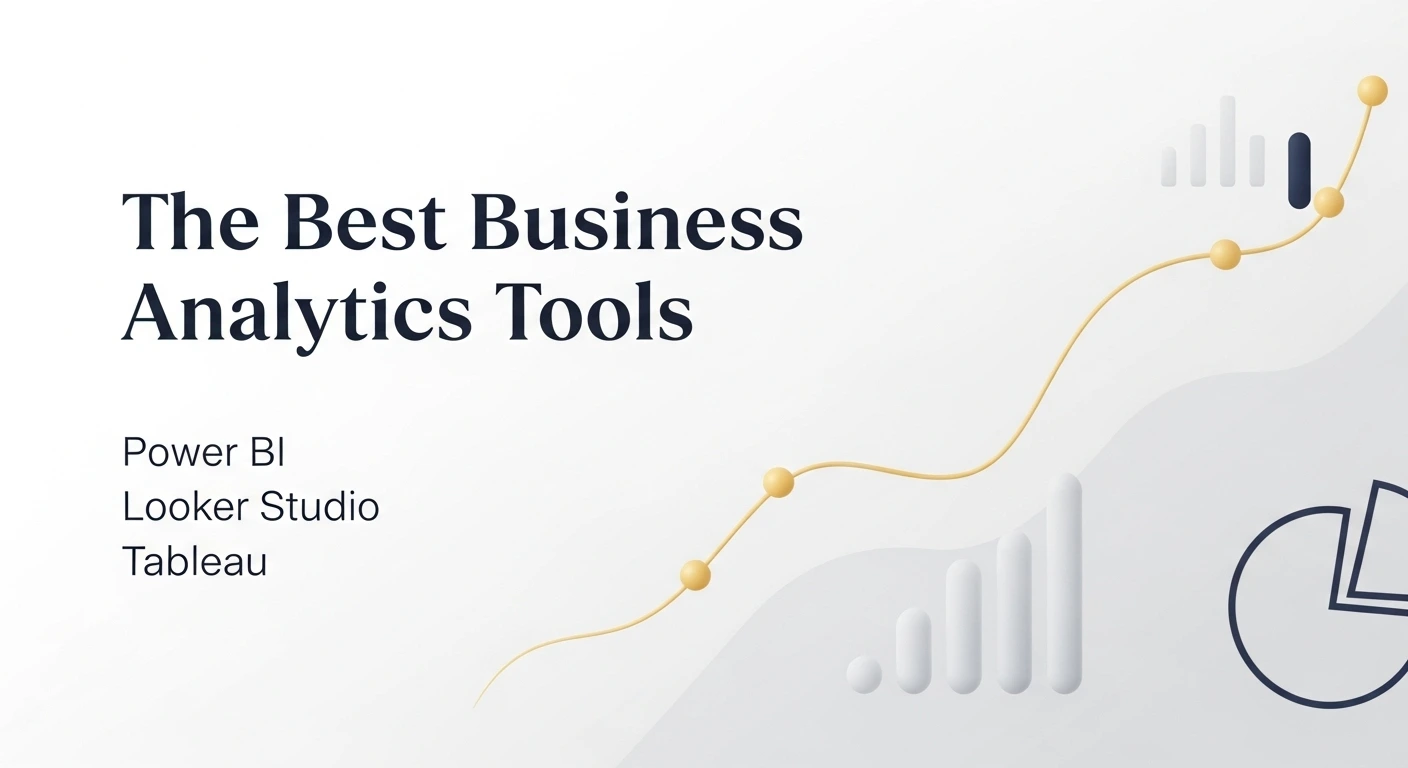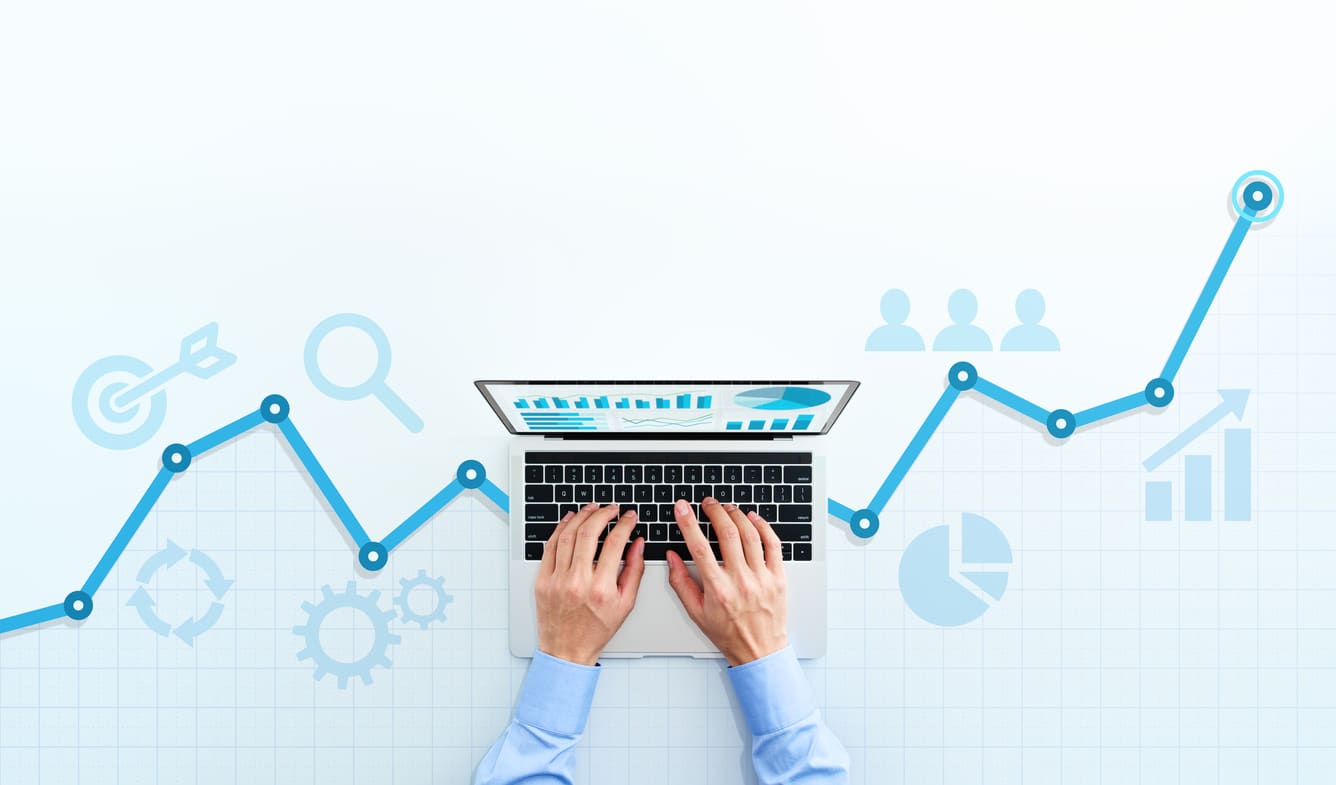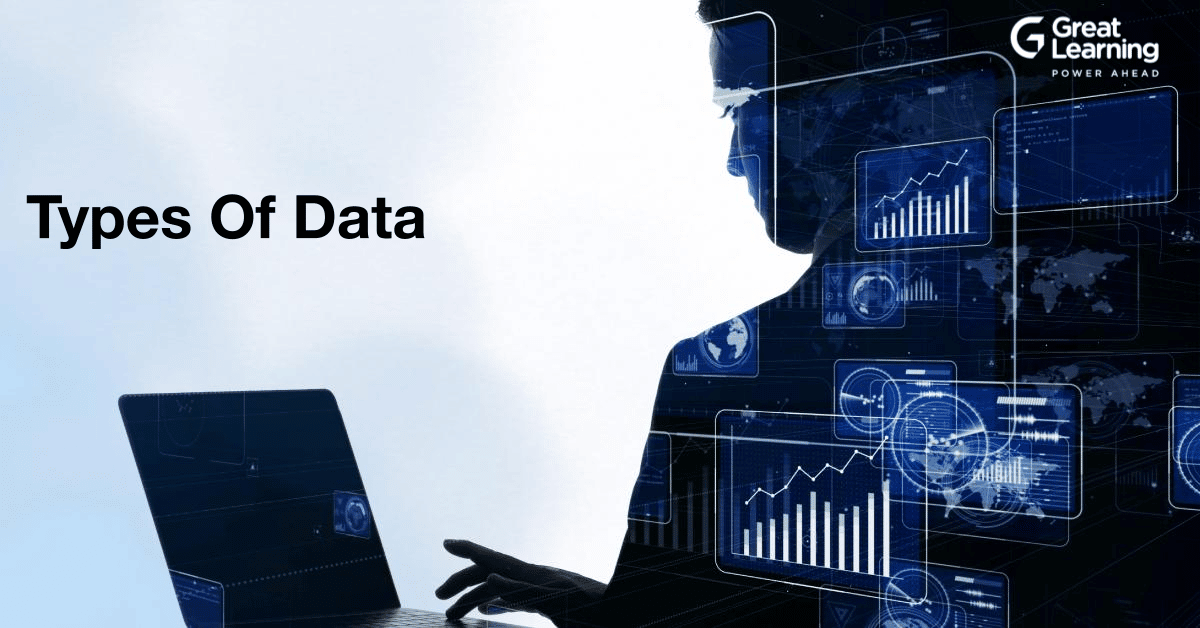This Guide covers data analytics projects for all skill levels, from beginner to intermediate. Projects range from analyzing e-commerce sales and social media engagement to building predictive models for customer churn.
You'll work with real-world datasets and tools like Python, SQL, and Tableau, learning key skills such as data cleaning, visualization, and machine learning. These projects aim to give you hands-on experience in applying data analytics to practical problems.
Start with data analytics—no experience needed. Learn the fundamentals and make smarter decisions at work.
Beginner Data Analytics Projects:
1. E-commerce Sales Dashboard
Project details:
Ingest and clean a transactional dataset (such as a CSV file) containing product, customer, and order information. Then perform Exploratory Data Analysis (EDA) to see the sales patterns. After this, create a dashboard that shows Key Performance Indicators (KPIs) and gives useful insights to the retail company.
Features:
- Extract and visualize KPIs: Monthly Recurring Revenue (MRR), Average Order Value (AOV), Customer Acquisition Rate.
- Create time-series plots (sales trends by day, week, month).
- Create bar charts: top 10 best-selling products and highest-value customers.
- Create a geographic map: how many sales are coming from which city or country.
Tools & Libraries:
- SQL (for data aggregation)
- Python (for Pandas data manipulation)
- Tableau or Power BI (for creating dashboard)
2. Social Media Engagement Analysis
Project Details:
Extracting post and engagement data from social media platform (like Twitter API). Creating structured dataset by cleaning raw JSON data. Then analyzing which type of content brings more engagement and at what time it is best to post.
Features:
- Extracting engagement rate per post: (Likes + Comments + Shares) / Followers.
- Analyzing performance according to content type (image, video, text).
- Doing sentiment analysis (comments positive, negative, neutral) with NLP libraries.
- Creating heatmap: on which day and at what time the engagement is the highest.
Tools & Libraries:
- Python (Pandas, Matplotlib, Seaborn)
- Jupyter Notebook
- Social media API, NLTK or TextBlob (for sentiment analysis)
3. COVID-19 Data Visualization
Project details:
Getting public time-series data of COVID-19 (e.g. from Johns Hopkins University or Our World in Data). Cleaning the data and comparing different countries/regions and creating visualizations to understand the impact of the pandemic.
Features:
- Choropleth map: How many cases/deaths are there in which place.
- Logarithmic line graphs: Comparing infection growth rate in different countries.
- Stacked bar chart: Showing proportion of vaccination (1 dose vs 2 doses).
- Calculating case fatality rate over time.
Tools & Libraries:
- R (ggplot2, dplyr) or Python (Plotly, Pandas)
- Public CSV datasets
- Tableau or Flourish (interactive visualizations)
4. Titanic Survival Prediction
Project details:
Creating a machine learning model from the Titanic dataset that predicts which passenger will survive. For this, data cleaning, feature engineering and training a classification algorithm will be required.
Features:
- Checking the relation of survival (by class, sex, age) using EDA.
- Filling missing values (e.g. Age using median or regression).
- Creating new features: FamilySize (SibSp + Parch), IsAlone.
- Training a logistic regression or decision tree model. Checking performance using confusion matrix and accuracy score.
Tools & Libraries:
- Python (Pandas, NumPy, Scikit-learn)
- Jupyter Notebook
- Kaggle (for dataset)
5. Zomato Restaurant Data Analysis
Project Details:
Analyzing the Zomato dataset to find out the patterns in the restaurants industry. Checking the relation between location, cuisine, cost and ratings.
Features:
- Geospatial analysis: Which cuisine is most popular at which place (hotspots).
- Checking the correlation between cost and user ratings.
- Text analysis on reviews: Which keywords appear in positive/negative feedback.
- Visualizing the ratings distribution (histograms, box plots).
Tools & Libraries:
- Python (Pandas, Matplotlib, Seaborn, Geopy)
- Jupyter Notebook
- Dataset (Kaggle or Zomato API)
6. Market Basket Analysis
Project Details:
Apply association rule mining on retail transactional dataset to find out which products are purchased together more often. This will help in store layout, cross-selling and product bundling.
Features:
- Preprocessing transaction data in one-hot encoded format.
- Extracting frequent itemsets with Apriori or FP-Growth algorithm.
- Extracting metrics of each rule: Support, Confidence, Lift.
- Extracting actionable rules, like {Bread, Butter} -> {Milk} that have high confidence and lift.
Tools & Libraries:
- Python (MLxtend: apriori, association_rules functions)
- R (arules package)
- Transactional sales data
Intermediate Data Analytics Projects:
7. Customer Segmentation with RFM Analysis
Project Details:
Segmenting customer base into distinct groups using RFM (Recency, Frequency, Monetary) analysis. This makes it easier to run targeted marketing campaigns — such as identifying high-value customers, at-risk customers, and inactive customers.
Features:
- Extracting Recency, Frequency, Monetary scores for each customer (from sales dataset).
- Applying K-Means clustering algorithm to these scores to create distinct segments.
- Deciding the number of best clusters using Elbow Method or Silhouette Score.
- Profiling each segment (e.g. “Champions”, “Loyal Customers”, “Needs Attention”) and visualizing it.
Tools & Libraries:
- Python (Scikit-learn: K-Means, Pandas: data wrangling).
- Tableau (to visualize customer segments).
- Customer transaction data.
8. Sales Forecasting with Time-Series Models
Project Details:
Predicting future sales based on past time-series data. This includes decomposing the series, performing stationarity tests and then applying forecasting models.
Features:
- Decomposing time-series into trend, seasonality and residual components.
- Checking stationarity with Augmented Dickey-Fuller (ADF) test, differencing if needed.
- Train and tune SARIMA model or Facebook Prophet model.
- Measure accuracy (MAE, RMSE) on hold-out test set.
Tools & Libraries:
- Python (statsmodels, pmdarima, Prophet).
- R (forecast package).
- Multi-year historical sales data.
9. Credit Card Fraud Detection
Project Details:
Building a machine learning model to detect fraudulent credit card transactions. The challenge is that the dataset is imbalanced (fraud cases are very rare). Train the model in a way that it detects fraud and genuine transactions are not wrongly flagged.
Features:
- Handle class imbalance using SMOTE technique (by creating synthetic fraud examples).
- Train classification models like Random Forest or Gradient Boosting.
- Measure performance using precision, recall, F1-score and AUC-ROC (useful metrics for imbalanced data).
- Understand the trade-off between false positives and false negatives using Confusion matrix.
Tools & Libraries:
- Python (Scikit-learn, Imbalanced-learn).
- Labeled dataset of financial transactions.
10. Social Media Sentiment Analysis with NLP
Project details:
Classify tweets or reviews sentiment-wise (positive, negative, neutral). For this, an NLP pipeline has to be created: from text preprocessing to model training.
Features:
- Text preprocessing pipeline: tokenization, stop-word removal, lemmatization.
- Convert text to numerical vectors: TF-IDF or Word2Vec embeddings.
- Train a classification model: Naive Bayes for baseline or an advanced model such as LSTM neural network.
- Visualize sentiment distribution and track sentiment changes over time on a brand/event.
Tools & Libraries:
- Python (NLTK, spaCy, Scikit-learn, TensorFlow/Keras).
- Scraped social media data or any pre-labeled dataset.
11. Website User Behavior Analysis with Funnels
Project details:
Understanding the user journey and identifying friction points by analyzing raw clickstream data of the website. Creating conversion funnels to see how a user moves from homepage to purchase and how many people drop-off at each step.
Features:
- Define and build conversion funnels (e.g. Homepage → Search → Product Page → Add to Cart → Purchase).
- Finding conversion rate and drop-off rate at each step.
- Cohort analysis: Tracking retention of different user groups over time.
- Path analysis: Identifying which navigation paths users take most commonly, and where they exit.
Tools & Libraries:
- Google Analytics data or raw server logs.
- SQL and Python (Pandas: for data processing/aggregation).
- Tableau or Power BI (for visualizing funnel charts).
12. Product Recommendation System
Project Details:
Build a recommendation engine that suggests items to users. Implement two main approaches: collaborative filtering (based on user-item interaction) and content-based filtering (based on item attributes) to provide personalized recommendations.
Features:
- Implement item-based collaborative filtering: calculate item similarity (cosine similarity) by creating a user-item interaction matrix.
- Implement content-based filtering: vectorize product descriptions/attributes with TF-IDF and recommend products with similar vectors.
- Build a hybrid model that combines both approaches.
- Evaluate performance with offline metrics (Precision@k, Recall@k).
Tools & Libraries:
- Python (Surprise library: collaborative filtering, Scikit-learn: content-based filtering).
- Dataset containing user IDs, item IDs, ratings, or purchase history.
Expert Data Analytics Projects:
13. Inventory Optimization Modeling
Project Details:
Develop a quantitative model that derives optimal inventory levels. Target is to minimize total inventory cost (holding, ordering, and stockout costs) using forecasting and optimization techniques.
Features:
- Product demand forecasting using time-series models (such as Exponential Smoothing).
- Implement Economic Order Quantity (EOQ) model to derive optimal order size.
- Calculate reorder point and safety stock level based on demand variability and supplier lead time.
- Run simulations such as Monte Carlo simulation to understand the financial impact of different inventory policies.
Tools & Libraries:
- Python (NumPy, SciPy for optimization, Pandas for data handling).
- SQL (for historical sales and inventory data access).
- Strong knowledge of operations research and statistical modeling.
14. Employee Attrition Prediction and Analysis
Project details:
Analyze HR dataset to understand the factors that make employees leave the company. Create a predictive model to identify high-risk employees in advance and try to retain them.
Features:
- Do EDA: Check the relation of attrition with salary, tenure, performance score, job satisfaction, etc.
- Train a classification model (Logistic Regression, XGBoost) to predict churn probability.
- Interpret the model using SHAP or LIME and understand what made the employee high-risk flagged.
- Do a survival analysis (using Kaplan-Meier curves) to understand tenure and attrition risk over time.
Tools & Libraries:
- Python (Scikit-learn, XGBoost, Lifelines for survival analysis, SHAP for explainability).
- Anonymized HR dataset.
15. Supply Chain Network Optimization
Project Details:
Modeling a company's supply chain including suppliers, warehouses, and customers. Solving logistical problems using optimization techniques, such as finding the most efficient delivery routes or deciding where to locate a new warehouse.
Features:
- Solving the Vehicle Routing Problem (VRP) to find the best delivery routes for fleet vehicles.
- Solving the Facility Location Problem: where to locate a new warehouse so that transportation costs are minimized.
- Optimizing product flow across the network using linear programming.
- Visualizing the supply chain network and optimized routes using geospatial tools.
Tools & Libraries:
- Python (OR-Tools for PuLP optimization; GeoPandas for mapping).
- Data on: locations, shipping costs, demand, capacity constraints.
16. Real-time Cab Service Monitoring Dashboard
Project Details:
Build a system that processes and visualizes fleet GPS data in real-time. System must handle high-velocity data streams, perform real-time aggregations, and display operational metrics on a live dashboard.
Features:
- Ingest real-time location data from a message queue such as Apache Kafka.
- Perform real-time calculations (e.g., active drivers per zone, avg trip speed) from frameworks such as Apache Spark Streaming or Flink.
- Implement geospatial indexing to quickly query available cabs within a radius.
- Build a live dashboard that maps cab locations, identifies demand hotspots, and tracks system-wide metrics.
Tools & Libraries:
- Azure Stream Analytics or Apache Kafka/Spark Streaming/Flink.
- Power BI or Tableau (with real-time connectors).
- NoSQL database (e.g. Cassandra) to store time-series location data.
17. Predictive Maintenance for IoT Devices
Project Details:
Using time-series sensor data (vibration, temperature, pressure) from industrial machinery, create a model that can predict machine failure. Frame the problem as classification or anomaly detection.
Features:
- Extracting features from raw sensor data: rolling means, standard deviations, Fourier transforms (to capture trends and patterns).
- Train a model (e.g. LSTM neural network or Random Forest) to predict Remaining Useful Life (RUL) or classify state (“healthy” vs “failure imminent”).
- Implement anomaly detection to detect unusual sensor readings.
- Evaluate the model on its ability to provide timely and accurate warnings.
Tools & Libraries:
- Python (TensorFlow/Keras: LSTMs, Scikit-learn).
- Time-series sensor data (from IoT devices).
18. Customer Churn Prediction in Telecommunications
Project Details:
Building a churn prediction model for a Telecom company. Extensive feature engineering will be done from customer call records, usage data and contract info to capture churn-indicative behavior.
Features:
- Creating features: monthly_usage_change, customer_service_call_count, contract_months_remaining, network_outage_incidents.
- Training high-performance models (LightGBM, XGBoost) and hyperparameter tuning.
- Identifying top churn drivers from feature importance plots.
- Calculating financial savings from model outputs (giving retention offers to at-risk customers and balancing cost vs lifetime value).
Tools & Libraries:
- Python (Scikit-learn, XGBoost, LightGBM, SHAP).
- Rich dataset containing Telecom customer activity and account info.
19. A/B Testing Analysis Pipeline
Project Details:
Design and analyze experiments (A/B tests) on a website or product. Follow proper statistical methodology — from hypothesis to significance testing — so that decisions are data-driven.
Features:
- Clearly define the null hypothesis (H0) and alternative hypothesis (H1) (e.g., H1: “New button color will increase CTR by at least 2%”).
- Perform a power analysis to determine the minimum sample size to detect a statistically significant effect.
- Run appropriate statistical tests on experiment results (e.g., two-sample t-test for continuous metrics, chi-squared test for proportions).
- Derive the p-value and confidence interval and then provide clear business recommendations.
Tools & Libraries:
- Python (SciPy.stats) or R (for statistical testing).
- Results data from A/B testing platform.
- Solid knowledge of experimental design and statistical inference.
Suggested Reads:






